This article was co-authored by Tracy Zollinger Dipl. OM, L.Ac., FABORM. Tracy Zollinger (she/her) is a Licensed Acupuncturist, Herbalist, and the Founder of Island Acupuncture in the San Francisco Bay Area. With over 15 years of experience, Tracy specializes in a holistic approach to reproductive health, fertility, and pre and post-natal care. Tracy creates comprehensive treatment plans using acupuncture, herbs, nutrition, and western labs. She holds a Master of Science in Traditional Chinese Medicine from the Academy of Chinese Culture and Health Sciences and is board certified in integrative reproductive medicine, with a focus on LGBTQIA specific needs.
There are 13 references cited in this article, which can be found at the bottom of the page.
This article has been viewed 28,303 times.
Tinctures are a type of herbal extract used to alleviate minor illnesses and provide health benefits. These extracts are prepared by soaking herbs in a liquid like alcohol or glycerin.[1] In most cases, you will take a tincture by mouth under the tongue. That said, there are some other ways to use tinctures, including topical applications and gargling. Be warned that the taste of tinctures can be very strong. If you're struggling to take a tincture, try diluting it.
Steps
Choosing a Tincture
-
1Talk to your doctor if you are currently taking any medications. Some herbal supplements may reduce the effectiveness of certain medications or cause unwanted side effects. Before using a tincture, ask your doctor if it is safe for you.[2]
- Black cohosh, echinacea, valerian, St. John's Wort, ginseng, gingko balboa, and feverfew tinctures may have serious effects if taken with some common medications, such as acetaminophen, antidepressants, prednisone, and warfarin.
- If you are pregnant, it is a good idea to have your doctor approve any tinctures or natural remedies before you use them.
- Tinctures should only be used for minor illnesses and conditions. If you have a serious or life-altering condition, talk to a doctor instead.
-
2Choose a tincture that will provide the benefits you want. Different herbs offer different benefits. To find the right tincture for you, talk to a doctor, natural medicine practitioner, or herbalist. You can buy tinctures at health food or herbal stores. Some popular tinctures include:
- Echinacea to reduce the length of colds.
- Chamomile and lavender to promote sleep, relaxation, and pain relief.
- Rosemary and calendula to treat minor scrapes and cuts.
- Peppermint to treat stomachaches.
- Ginger to reduce inflammation and treat colds.
- Thyme to treat coughs and respiratory infections.
Advertisement -
3Buy a vinegar or glycerin-based tincture if you can't use alcohol. The vast majority of tinctures are made with alcohol since it is such an effective solvent. While the amount of alcohol in a dose of tincture is very small, you can find tinctures made with water, apple cider vinegar, or vegetable glycerin. Use these if you cannot use alcohol because of pregnancy or a medical condition.[3]
- You can also evaporate the alcohol by adding the entire dose to hot water or tea. Let it sit for about 5 minutes before drinking. The alcohol should mostly be gone.[4]
-
4Store your tinctures in a cool, dark place until you are ready to use them. A cabinet or drawer is a good place to keep your tinctures. Make sure they are not exposed to light, heat, or freezing conditions. Alcohol-based tinctures will last forever in the proper conditions.[5]
- Apple cider-based tinctures will last for about a year. Vegetable glycerin and water-based tinctures will last for 3-5 years.
Finding the Right Dose
-
1Take 2 dropperfuls for adults and children over 12. A dropperful is the amount that fills one dropper. It is roughly equal to 30 drops. Your dosage may vary based on the type of tincture you are using. Read the label of your tincture for more specific information about dosing.[6]
- In general, you can take up to 3 doses of tincture a day. Talk to your doctor or herbalist to find the right dosing schedule for you.
-
2Determine a child's dose based on age. Children under 12 will generally receive their dose by drops, not by dropperfuls. Children can usually receive 2 or 3 doses a day. Children's doses are generally as follows:[7]
- 12 to 18 months: 7 drops
- 18 to 24 months: 8 drops
- 2 to 3 years: 10 drops
- 3 to 4 years: 12 drops
- 4 to 6 years: 15 drops
- 6 to 9 years: 24 drops
- 9 to 12 years: 30 drops (or 1 dropperful)
-
3Talk to your doctor before giving a tincture to a child under a year old. This will ensure that it is safe for your baby to take tinctures. Some people recommend that breastfeeding mothers take the tincture for their baby, as the benefits may pass from the mother to the baby. If you are breastfeeding, talk to your doctor before you take a tincture.[8]
-
4Dilute the tincture if you cannot handle the taste. Tinctures can have a strong and bitter taste. While diluting the tincture is not necessary, it can help make it taste better. Squeeze your dose of the tincture into a bowl with about 1–2 ounces (28–57 g) of water or juice. You can also use a few drops of lemon or honey. Mix them together before squeezing it back into the dropper.[9]
- Do not give honey to children under a year old.
Taking a Tincture by Mouth
-
1Place the end of the dropper into the bottle. The top of the tincture bottle will have a dropper with a bulb attached to the lid. Hold the dropper by the bulb and insert the other end into the bottle.[10]
- If the tincture does not come with a dropper, buy a dropper at a drug store.
-
2Squeeze the dropper and release to fill it. A single squeeze is considered to be 1 “dropperful” of tincture. No matter how long your dropper is, 1 squeeze will almost always provide the same amount of tincture since the bulb on each dropper is the same size.[11]
- Keep in mind that there may still be some air at the top of the dropper. This is normal. Don't try to fill the dropper all the way to the top.
-
3Squeeze the dropper to release a dose under your tongue. The tincture will enter your system most effectively if taken under the tongue. The tincture will taste very strong, but try to hold it under your tongue for 10-30 seconds before swallowing. Remove the dropper from your mouth.[12]
- Adults can squeeze down the bulb until the entire dropperful is released. If you are giving the dose to a child, use short, gentle squeezes to release the proper number of drops.
- If you are using a vegetable glycerin or water-based tinctures, don't let the dropper touch your mouth or it may spread bacteria to the bottle. If it does touch your mouth, clean it off using soap and warm water. This is not a problem with alcohol or vinegar tinctures as these solvents will kill most bacteria.[13]
-
4Repeat to give yourself another dropperful. Take as many dropperfuls as your dose requires. Remember to hold each dropperful under your tongue for a few seconds before swallowing.[14]
-
5Take a sip of water to get rid of the taste. If the taste was too much for you, you may take a sip of water to remove the taste after you have given yourself a dose. This is optional, however.[15]
Using Tinctures for Special Conditions
-
1Gargle a tincture mixed with hot water to soothe a sore throat. Dilute a full dose of tincture in about 1–2 ounces (28–57 g) of hot (but not boiling) water. Hold the mixture in your mouth, lean back your head, and gargle the mixture in the back of your throat for about 10 seconds. You can swallow it or spit it out when you are done.[16]
- Echinacea, goldenseal, myrrh, and sage are good tinctures for this type of treatment.
-
2Apply a few drops to a clean scrape or cut. Some tinctures have antibacterial properties, such as rosemary and calendula. For minor scrapes, grazes, and cuts, place a few drops over the wound and pat it down with a cotton ball. Simply place a bandage on top.[17]
- This is safe for both children and adults, although you should consult a doctor before using it on children under the age of 4.
- For deep cuts and major wounds, skip the tincture. Call 911 or visit a doctor.
- Putting cayenne tincture on a wound may help stop bleeding. Make sure that the wound is not on a sensitive area of your body, such as your genitals or face, before using a cayenne tincture. It may burn.
-
3Add 2 dropperfuls to hot water to make a relaxing tea. Teas can help soothe sore throats during colds or promote relaxation during stressful times. Heat up some water and pour it into a cup or mug. Add 2 dropperfuls of tincture and stir. The tea will be ready immediately. You do not need to let it brew.[18]
- Chamomile, ashwagandha, lavender, and lemon balm tinctures make for relaxing and soothing teas.
- If you are giving this tea to a child, make sure to give them the appropriate dosage for their age.
-
4Blend tinctures if you are using more than 1 at a time. If you are using multiple tinctures at once, it is safe to blend them together in a bottle or bowl before squeezing them up in the eye dropper. Mix equal amounts of each tincture to get the full effect of each one.[19]
- To treat colds and flus, for example, you might mix licorice, goldenseal, and ginger tinctures.
- To improve memory and alertness, try mixing gingko balboa, ginseng, and gotu kola.
- Since dosages can vary between tinctures, check the labels of each tincture to make sure that the dosage is correct.
Expert Q&A
Did you know you can get expert answers for this article?
Unlock expert answers by supporting wikiHow
-
QuestionHow do you use CBD tinctures?
 Aimée Shunney, NDDr. Aimée Gould Shunney is a Licensed Naturopathic Doctor at Santa Cruz Integrative Medicine in Santa Cruz, California where she specializes in women's health and hormone balancing. She also consults with various companies in the natural products industry including CV Sciences, makers of PlusCBD Oil. Dr. Aimée educates consumers, retailers, and healthcare providers about CBD oil through written articles, webinars, podcasts, and conferences nationwide. Her work has been featured at the American Academy for Anti-Aging Medicine, the American Association of Naturopathic Physicians Conference, and on Fox News. She earned her ND from the National College of Naturopathic Medicine in 2001.
Aimée Shunney, NDDr. Aimée Gould Shunney is a Licensed Naturopathic Doctor at Santa Cruz Integrative Medicine in Santa Cruz, California where she specializes in women's health and hormone balancing. She also consults with various companies in the natural products industry including CV Sciences, makers of PlusCBD Oil. Dr. Aimée educates consumers, retailers, and healthcare providers about CBD oil through written articles, webinars, podcasts, and conferences nationwide. Her work has been featured at the American Academy for Anti-Aging Medicine, the American Association of Naturopathic Physicians Conference, and on Fox News. She earned her ND from the National College of Naturopathic Medicine in 2001.
Licensed Naturopathic Doctor
-
QuestionWhat is a tincture?
 Tracy Zollinger Dipl. OM, L.Ac., FABORMTracy Zollinger (she/her) is a Licensed Acupuncturist, Herbalist, and the Founder of Island Acupuncture in the San Francisco Bay Area. With over 15 years of experience, Tracy specializes in a holistic approach to reproductive health, fertility, and pre and post-natal care. Tracy creates comprehensive treatment plans using acupuncture, herbs, nutrition, and western labs. She holds a Master of Science in Traditional Chinese Medicine from the Academy of Chinese Culture and Health Sciences and is board certified in integrative reproductive medicine, with a focus on LGBTQIA specific needs.
Tracy Zollinger Dipl. OM, L.Ac., FABORMTracy Zollinger (she/her) is a Licensed Acupuncturist, Herbalist, and the Founder of Island Acupuncture in the San Francisco Bay Area. With over 15 years of experience, Tracy specializes in a holistic approach to reproductive health, fertility, and pre and post-natal care. Tracy creates comprehensive treatment plans using acupuncture, herbs, nutrition, and western labs. She holds a Master of Science in Traditional Chinese Medicine from the Academy of Chinese Culture and Health Sciences and is board certified in integrative reproductive medicine, with a focus on LGBTQIA specific needs.
Licensed Herbalist & Acupuncturist
References
- ↑ Tracy Zollinger Dipl. OM, L.Ac., FABORM. Licensed Herbalist & Acupuncturist. Expert Interview. 6 October 2020.
- ↑ https://www.drugs.com/slideshow/herb-drug-interactions-1069
- ↑ https://herblore.com/overviews/tinctures
- ↑ https://www.youtube.com/watch?v=J5BX2OSdTac&feature=youtu.be&t=75
- ↑ https://herblore.com/overviews/tinctures
- ↑ https://herblore.com/overviews/tinctures
- ↑ https://herblore.com/overviews/childrens-dosage-guide
- ↑ https://herblore.com/overviews/childrens-dosage-guide
- ↑ https://herblore.com/overviews/tinctures
- ↑ https://herblore.com/overviews/tinctures
- ↑ https://herblore.com/overviews/tinctures
- ↑ https://www.youtube.com/watch?v=J5BX2OSdTac&feature=youtu.be&t=26
- ↑ https://herblore.com/overviews/tinctures
- ↑ https://herblore.com/overviews/tinctures
- ↑ https://www.youtube.com/watch?v=J5BX2OSdTac&feature=youtu.be&t=35
- ↑ https://www.youtube.com/watch?v=J5BX2OSdTac&feature=youtu.be&t=107
- ↑ https://learningherbs.com/remedies-recipes/strep-throat-remedy/
- ↑ https://herblore.com/overviews/tinctures
- ↑ https://www.indigo-herbs.co.uk/natural-health-guide/how-to-take-herbal-tinctures
- ↑ Tracy Zollinger Dipl. OM, L.Ac., FABORM. Licensed Herbalist & Acupuncturist. Expert Interview. 6 October 2020.


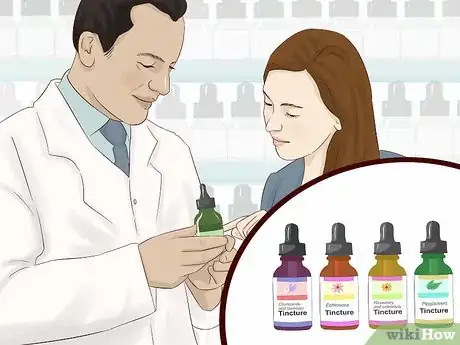
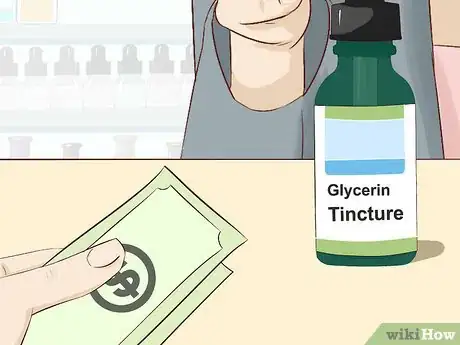
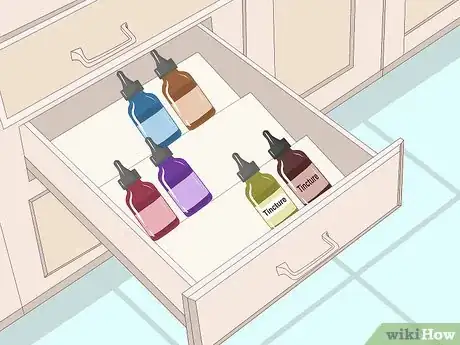
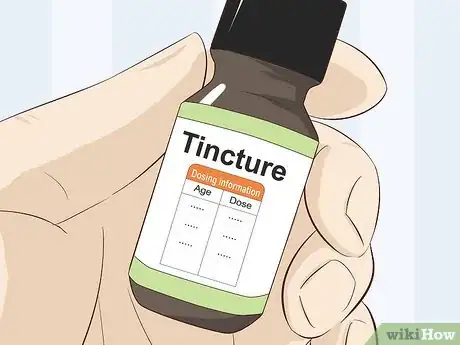

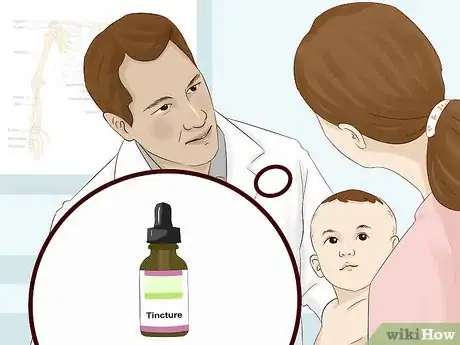

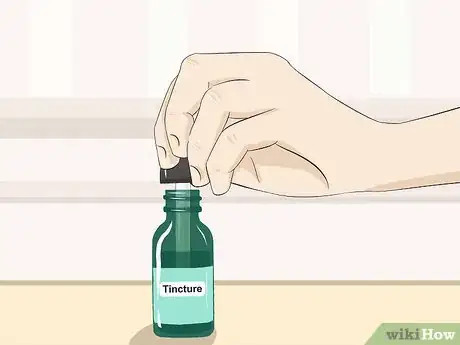
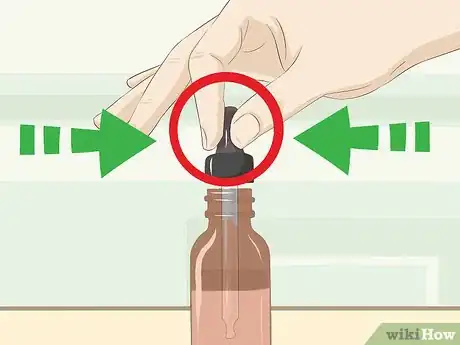

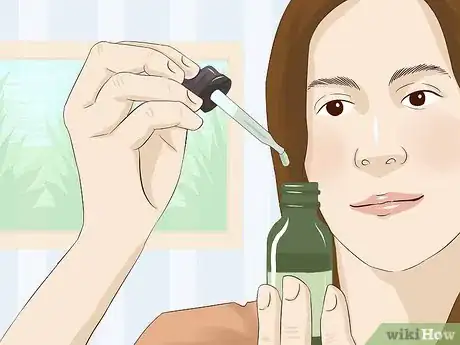

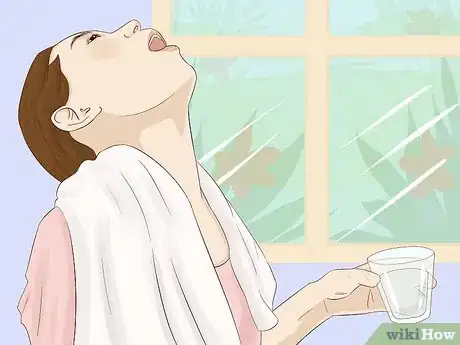
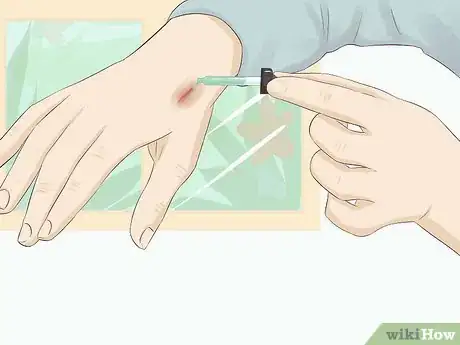

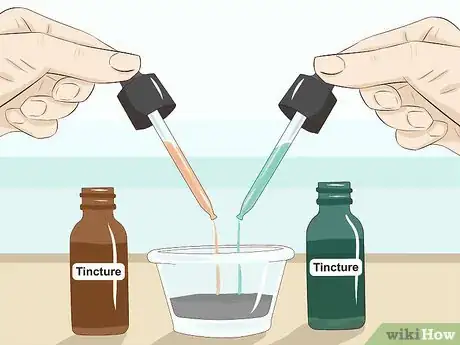




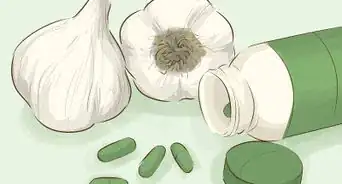
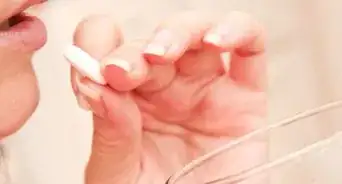

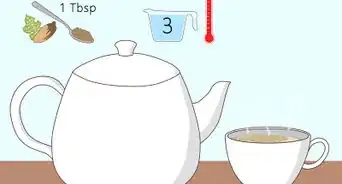
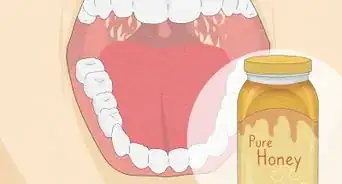
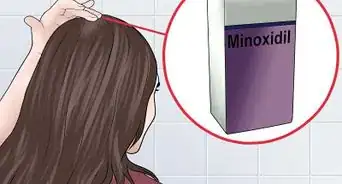















































Medical Disclaimer
The content of this article is not intended to be a substitute for professional medical advice, examination, diagnosis, or treatment. You should always contact your doctor or other qualified healthcare professional before starting, changing, or stopping any kind of health treatment.
Read More...